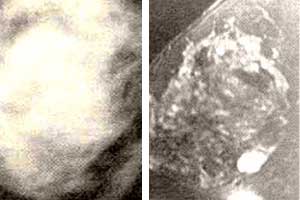Sharp eye for breast cancer
 IN THEIR quest for better cancer detection techniques, researchers are now looking towards Magnetic Resonance Imaging (MRI), as a faster and safer means of detecting breast cancer. MRI screens for breast tumours by probing the human body with a combination of magnetic fields and radio waves (Scientific American, Vol 272, No 4). The conventional method to confirm breast cancer is an x-ray mammography. But this method of radiological detection fails to identify turnours in about half the cases.
IN THEIR quest for better cancer detection techniques, researchers are now looking towards Magnetic Resonance Imaging (MRI), as a faster and safer means of detecting breast cancer. MRI screens for breast tumours by probing the human body with a combination of magnetic fields and radio waves (Scientific American, Vol 272, No 4). The conventional method to confirm breast cancer is an x-ray mammography. But this method of radiological detection fails to identify turnours in about half the cases.
MRI would really help those women who have 'dense' breasts - in which the glandular mass is more than the fat. About 40 per cent of women have dense breasts, whose tissues are prone to scatter and produce a blurred x-ray mammography image, preventing physicians from detecting the subtle distortions indicative of cancer.
Another advantage that MRi has over the conventional x-ray method is that the former can be used in combinatiori with tracers, which unlike the contrast agents used in the x-rays, do not give rise to dangerous allergic reactions. Once introduced into the bloodstream, these tracers get absorbed preferentially by the tissues and images produced before and after tracer infusion help diagnose any turnours.
The MR1 procedure requires the patients to lie face downward, with their breasts held still below them, not compressed painfully as in mammographic examinations. The time taken for imaging is guaranteed to be quite short as the contrast agents mark the tumours only for a few minutes.
However, the MRi diagnosis is an immensely expensive process. Jeffrey C Weinreb of New York University Medical Center is worried that the cost might be a deterrent for widespread use of MRI in detecting breast cancer even if it proves to be clinically valuable. But then on an optimistic note he adds that it could probably be done cheaply, if the demand escalates.
Meanwhile, researchers are worried that medical entrepreneurs may not wait for the completion of proper trials before marketing breast MR1 services to the public. As Weinreb says, "Screening with MR1 could be so great and revolutionary that everybody's getting it done. Then again, it could flop. We're just scratching the surface and learning how to do it."
